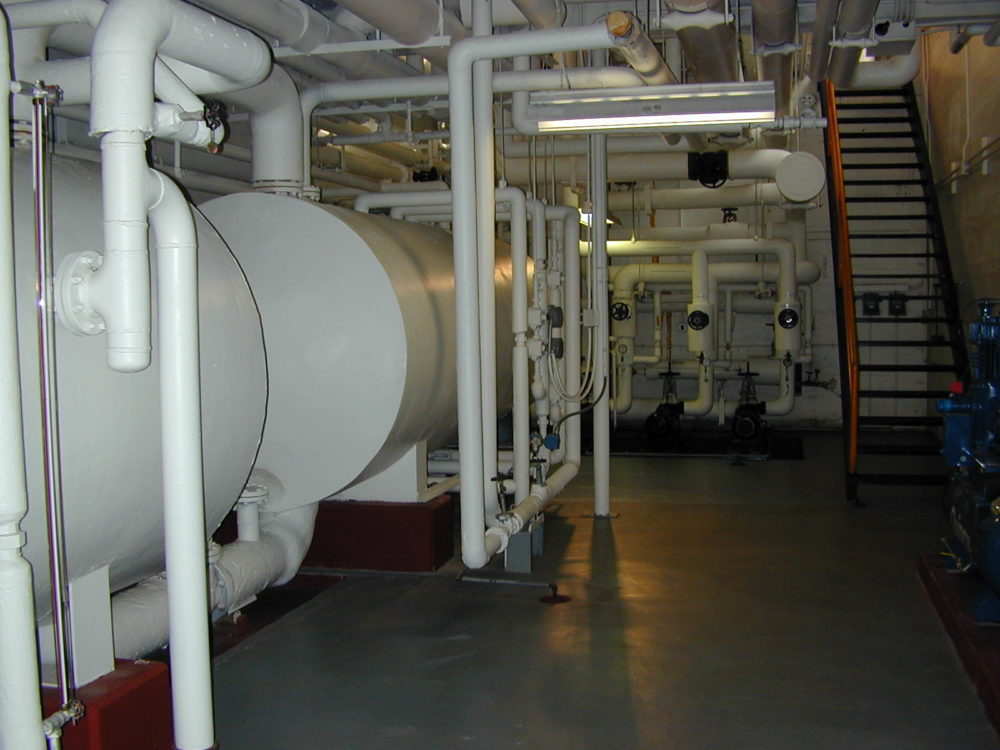Best Practice No. 3 – Vented Condensate Tank Operations

Do you want this article in PDF format? Download it here:
Download a PDFBEST PRACTICE NO. 3
WHY HAVE CONDENSATE PUMPS?
READ FULL PDF TECHNICAL PAPER – CLICK HERE
Why Have CONDENSATE Pumps?
In gravity type systems the condensate lines do not have the pressure to flow the condensate back to the boiler operation; therefore there is a need to have a vented condensate pumping system. Another common application is the main collection point in the boiler operation, where there is a need to collect the condensate and pump the condensate to the deaerator system. In low, medium and high pressure systems there is a need for condensate pumps depending the on the design of the system.
- Low pressure steam system
- Modulating process steam system
- Main collection
2. Types of Pumping Systems:
- Electric (on-off operation)
- Electric (continuous flow operation)
- Steam motive type pump (self actuating)
- Air motive type pump (self actuating)
- Electric type steam or air motive pump
There are different types of pumps for the different applications found in the steam and condensate system.
2.1 Electric (On-Off)
As the condensate level in the tank increases to a certain level, contacts close in a float switch and start the condensate pump. The pump operates, until the condensate level decreases to a point that the float switch contact opens and the pump stops. This operation repeats as the water level rises and falls.
One of the most common pump systems is the floor mounted horizontal tank with one or more pumps mounted to the side of the tank. It must be understood that this design is usually operated at temperatures below 205 degrees F. If temperature is higher the pumps will cavitate and malfunction.
The pump is allowed to operate at a nearly constant head-capacity point and not over the entire pump curve as with continuous operation.
- Condensate capacities of 12,000 lbs per hour or less
- Single pump or dual pump
- Gravity systems, low pressure or medium pressure return system
Advantages:
- Low cost
- Simple operation
Disadvantages:
-
-
- Low capacities
- Surging in the condensate lines during pumping mode
-
2.2 Electric (Continuous Flow)
The condensate level is controlled by a modulating valve, which regulates to keep a constant condensate level in the tank. As the demand increases and the level start to increase, the valve opens further to let more condensate flow though the valve into the condensate return system. As the demand decreases and the level begins to drop; the valve closes down and reduces the amount of condensate being discharged.
The condensate pump operates continuously and pumps against the modulating valve. The flow corresponds to the pump performance curve at various discharge heads relating to settings of the modulating valve. Continuous operation is more suited to centrifugal pump operation, which allows for wide capacity changes over a smaller change head pressure. Also, the horsepower does not increase as a pump is operating against a nearly closed modulating valve, which can occur during operation.
Continuous flow pumps should have a by-pass orifice or recirculation valve. These devices will recirculate a required flow back to the receiver, if the control valve on the discharge side of the pump closes to prevent the possibility of pumps overheating or cavitating. Minimum By-Pass Sizing –Consult your pump manufacturer for assistance.
- Condensate capacities above 12,000 lbs per hour (high capacities)
- Single pump operation (most common)
- Gravity systems, low pressure or medium pressure return system
Advantages:
- High capacities
- Handles load variations
- Continuous flow of condensate in the return system, therefore no surging in the condensate lines
Disadvantages:
- More complicated
- Higher initial cost
2.3 Steam Motive Pump (Self Actuating)
The operating force of this type of pump is steam, and the consumption is very low. Since the pump handles a low volume of condensate at each stroke, its applications are somewhat limited.
The steam-powered pumps can be used in a closed loop system or a vented system to atmosphere. In a closed loop system, a steam trap must be installed at the discharge of the pump unit.
A vented receiver or collection header is an essential part of the installation, as any flash steam must be separated from the condensate before it reaches the pump assembly.
- Condensate capacities of 12,000 lbs per hour or less
- Gravity systems, low pressure or medium pressure return system
Advantages:
- Low cost
- Simple operation
- No electric is required
- Used in explosion proof areas
Disadvantages:
- Low capacities
- Needs a fill head
- Mechanical failures of the mechanism
- Venting on flash steam in the chamber is limited
2.4 Air Motive Pump (Self Actuating)
The operating force of this type of pump is compressed air, and the consumption is very low. Since the pump handles a low volume of condensate at each stroke, its applications are somewhat limited.
It is not recommended that these types of pumps be used in groups to handle larger condensate loads.
- Condensate capacities of 12,000 lbs per hour or less
- Gravity systems, low pressure or medium pressure return system
Advantages:
- Low cost
- Simple operation
- No electric is required
- Used in explosion proof areas
Disadvantages:
- Low capacities
- Air comes in contact with the condensate
- Needs a fill head
- Mechanical failures of the mechanism
- Venting on flash steam in the chamber is limited










